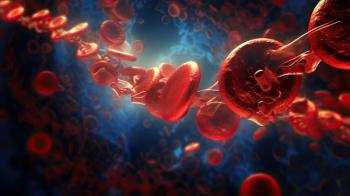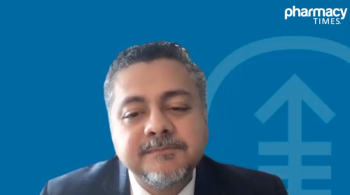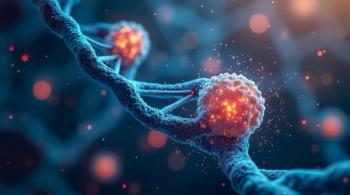
IL-8+ Neutrophils Can Be Key in Therapeutic Developments for Alcohol-Associated Hepatitis
Key Takeaways
- IL-8+ neutrophils are central to sAH inflammation, increasing liver damage and necessitating early liver transplantation due to high mortality.
- Elevated IL-8 levels in sAH livers drive neutrophil infiltration, unlike other liver diseases, exacerbating inflammation and tissue damage.
Severe alcohol-associated hepatitis has limited effective pharmacological therapies, emphasizing the need for treatment options.
In a recent article published in eGastroenterology, investigators discussed IL-8+ neutrophils, which are considered to be central drivers of the inflammation associated with severe alcohol-associated hepatitis (sAH). Using multiple studies, the investigators further demonstrated the molecular mechanisms that support sAH while identifying how IL-8 signaling can be a potential therapeutic pathway for patients with the disease.1,2
Patients with underlying alcohol-associated liver disease—particularly those with recent episodes of excessive drinking—are at an increased risk of developing acute AH, a condition characterized by severe clinical symptoms such as jaundice. sAH is commonly linked to alcohol-associated cirrhosis and carries a high short-term mortality rate. Early liver transplantation is frequently required as a life-saving intervention because of the limited availability of effective pharmacological therapies or treatments.1
Neutrophil infiltration—which is a hallmark of sAH—is driven by elevated levels of IL-8, a chemokine crucial in recruiting and activating immune cells. Unlike other liver diseases, sAH has an abundance of IL-8+ neutrophils within the liver, increasing a cycle of inflammation and tissue damage.1
Prior multiplex analyses of liver tissues showed that most hepatic neutrophils in sAH are IL-8+, whereas circulating neutrophils in the same patients have minimal IL-8 expression. Additionally, these analyses also demonstrated that neutrophils from livers of patients with sAH expressed much higher levels of IL-8 compared with those from the blood. Further, RNA sequencing also showed that other neutrophil chemokines, including CXCL1, CXCL5 and CXCL6, are also upregulated in sAH livers.1
The identification of the molecular mechanisms that drive AH is essential for the development of targeted therapies and interventions that can prevent liver failure. Some of the strategies to target IL-8 signaling that the investigators propose include therapeutic antibodies such as ABX-IL-8 and HuMax-IL-8 (BMS-986253), CXCR1/CXCR2 inhibitors, and p38 MAPK inhibitors.1,2
Currently, both ABX-IL-8 and HuMax-IL-8 are being evaluated in phase 1/2 clinical trials for various cancers and inflammatory diseases. Another approach involves inhibiting the IL-8 receptors CXCR1 and CXCR2 through short lipopeptides—or pepducins—which have been previously demonstrated to ameliorate mild alcohol-associated steatohepatitis in mouse models. Additionally, the authors note that there are multiple CXCR1/CXCR2 antagonists that are undergoing testing in clinical trials for cancers, diabetes, and inflammation, meaning they can be potential candidates for sAH therapy.1
The authors noted that targeting inflammatory stimuli and signals such as p38 MAPK that drive IL-8 expression may also be an alternative option to block IL-8. Because there is an association between bacterial infection and sAH, monitoring for infections will be crucial in the implementation of anti-IL-8 or anti CXCR1/CXCR2 therapies.1
Finally, combination therapies with antibiotics or IL-22—a cytokine with potent hepatoprotective and antibacterial effects—may also mitigate infection risk, according to the authors. This will allow the liver to ability to repair and regenerate because it is not hindered by infection.1
“By targeting IL-8+ neutrophils, we can develop treatments that selectively reduce inflammation in sAH without affecting other liver conditions,” Bin Gao, MD PhD, professor, Laboratory of Liver Diseases, National Institute on Alcohol Abuse and Alcoholism, National Institutes of Health, Bethesda, Maryland, said in a news release. “Our work highlights the critical role of IL-8+ neutrophils in sAH and underscores the need for interdisciplinary collaboration to develop effective therapies.”2
REFERENCES
1. Guan Y, Feng D, Maccioni L, Wang Y, Gao B. New therapeutic target for alcohol-associated hepatitis (AH): AH-associated IL-8+ neutrophils. eGastroenterology. 2024;2:e100166. doi:10.1136/ egastro-2024-100166
2. First Hospital of Jilin University. Reviewing IL-8+ neutrophils in alcohol-associated hepatitis. News release. January 6, 2025. Accessed January 13, 2025. https://www.eurekalert.org/news-releases/1069519
Newsletter
Stay informed on drug updates, treatment guidelines, and pharmacy practice trends—subscribe to Pharmacy Times for weekly clinical insights.




















































































































































































































